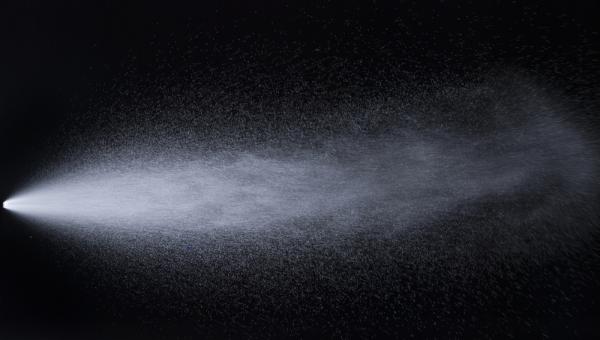Legionnaires’ disease is a type of pneumonia caused by infection with the bacteria Legionella pneumophila. Though it first got national attention in the 1970s and is only now mentioned during large outbreaks, each year there are 200-400 cases reported in New York City.
It's a serious illness. Although the mortality rate of infection can vary, it is roughly about 10 percent. The recent outbreak in New York City has already taken one victim (who was over 90 years old) and sickened six others (four remain hospitalized.) However, they aren't making each other sick. People catch it from breathing in the bacteria in the form of water vapor - aerosols - so when an outbreak occurs and the source of the bacteria contaminated aerosols is found and shut down, the outbreak can be contained.
The Legionella bacterium uses a handy trick to multiply once it gets inside the body. When a bacterial infection is recognized by the immune system, some of the first cells to respond are white blood cells called macrophages. These cells are considered the garbage trucks of the immune system. Once they find foreign bacteria, they destroy them through the process of phagocytosis. In this process, the macrophage swallows up the bacteria, bringing it inside the macrophage. Once inside, the bacteria is destroyed. But, Legionella have devised a way to not only survive being engulfed by the macrophage - they can replicate (make more of themselves) in the immune cells. Despite this clever scheme, antibiotics are an effective way to combat the infection.
The most common route of infection is droplets of warm water from some contaminated device, most frequently something like,
- Showers and faucets
- Cooling towers (air-conditioning units for large buildings)
- Hot tubs that aren’t drained after each use
- Decorative fountains and water features
- Hot water tanks and heaters
- Large plumbing systems
Some people are at higher risk of becoming sick, including older adults (aged 50 or older), smokers and people with chronic lung disease or weakened immune systems. Symptoms occur two to 10 days after a person is infected, including flu-like symptoms such as chills, fever, headache and muscle aches, coughing and even fatigue, loss of appetite, confusion or diarrhea.
During the summer of 2015, a Legionnaires' Disease outbreak occurred in the South Bronx that killed 15 people and sickened over 70. The source of the bacteria was found to be several cooling towers in the area. Because of this, cooling towers, evaporative condensers and fluid containers in NYC are now required to be registered with the Department of Buildings.
Hopefully, the source of the outbreak in East Harlem will be identified soon and the number of people affected will not climb any higher.
Reference:
https://www1.nyc.gov/site/doh/health/health-topics/legionnaires-disease....




